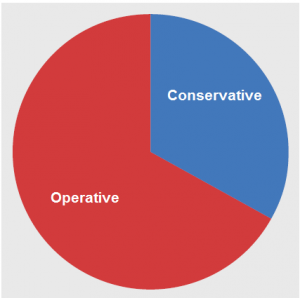With a recent negative American view, it is nice to have a more encouraging German perspective. Though 2/3 go to surgery, 1/3 can be managed with physiotherapy, cycling exercise, psychotherapy, and injections – epidural, paraspinal, facet and sacroiliac.
Z Rheumatol. 2015 Apr;74(3):215-25. doi: 10.1007/s00393-014-1500-2.
[Lumbar spinal stenosis : From diagnosis to correct therapy].
[Article in German]
Benditz A(1), Grifka J, Matussek J.
http://www.ncbi.nlm.nih.gov/pubmed/25854156
Their consensus of treatment:
- muscle lordosis (curvature) and stabilization training
- Being active – cycling is suggested as sitting posture opens up canal. I wonder if swimming would be considered as well
- Balneotherapy (spa) – well this is a German article so…
- Psychotherapeutic
Injections – they recognize this is controversial but have 60 cases they injected with local and crystalline steroid. After 1 year followup:
- Pain started at 7.21/10 and ended up at 3.58/10
- Patients rated treatment success in (35%) or satisfactory (52%)
- No negative reactions
Surgery – they point out: “The goal of all surgical procedures is to decompress the spinal canal without compromising the stability of the motion segment. This can make an additional fusion necessary.”
———–
The wild card here , is a study finding IV Pamidronate reduced spinal stenosis symptoms:
Clin Rheumatol. 2009 Jun;28(6):715-7.
An open study of pamidronate in the treatment of refractory degenerative lumbar spinal stenosis.
Feld J, Rosner I, Avshovich N, Boulman N, Slobodin G, Rozenbaum M.
http://www.ncbi.nlm.nih.gov/pubmed/19219479
- 24 patients with neurogenic claudication
- pamidronate “60 mg in 500 cc normal saline, over 4 hours. After 3 months, those patients reporting some clinical response received additional three monthly infusions.” (15 had 6; 5 had 5; 6 and 3; 1 withdrew after 1)
- allowed some renal decline subjects: “Patients with stable serum creatinine levels between 1.5 and 2.0 mg/dl received a reduced dose of pamidronate, 30 mg, with those with more severe renal decline excluded.”
- VAS pain level went from average 7.6/10 to 4.6/10 by end treatment course (3-6 months) – mean improvement was 40%
- side effects – 5/24 had flu-like symptoms that started within hours of infusion and continued for several days
- 6/9 people reviewed at 8 months had no recurrence.
- tolerance may be poor among some cases as they can feel like they have quite a flu after the infusion…
———-
I have been using “sweet caudals” on chronic back pain cases – 10 mls of D5W (I put in 2000 ug b12 preservative free)[no local] – with a short needle – 1″ -27 in thin and 2″ – 25 in bigger. They don’t last long initially but repeated ones are supposed to last longer. Don’t know how useful yet…
Any other ideas?

